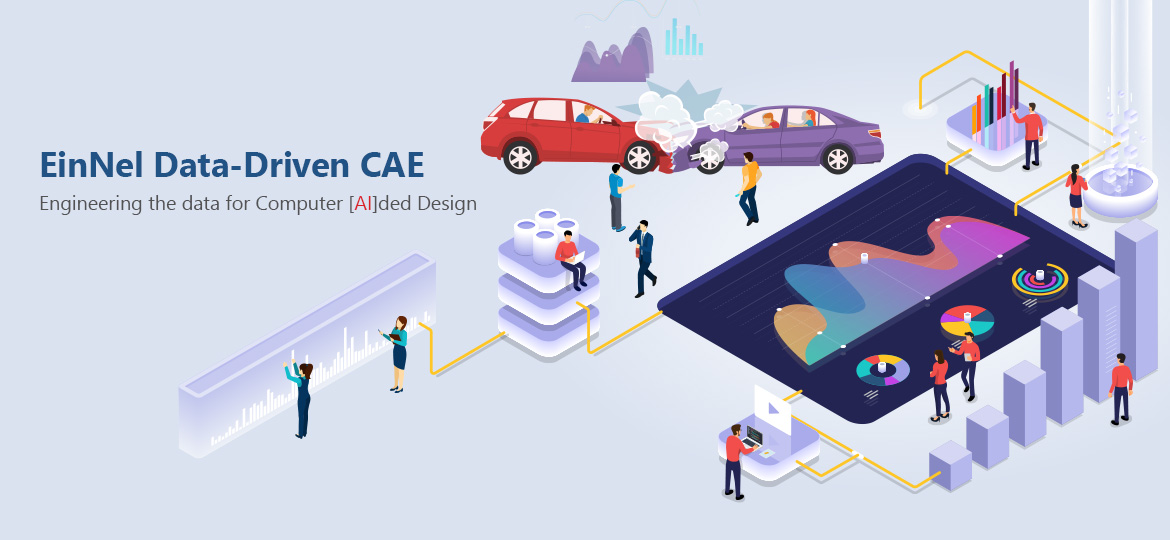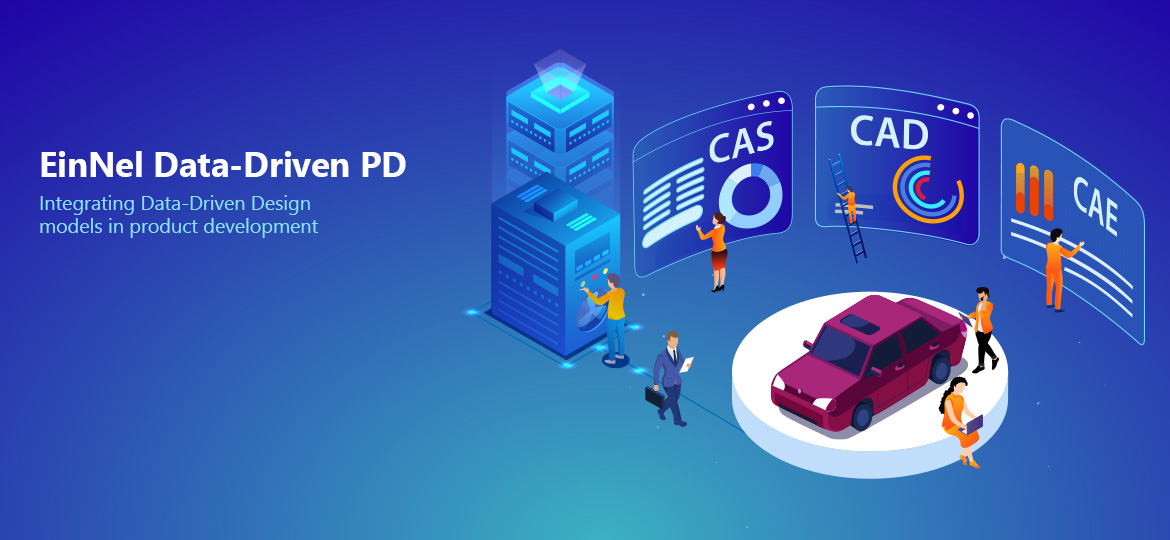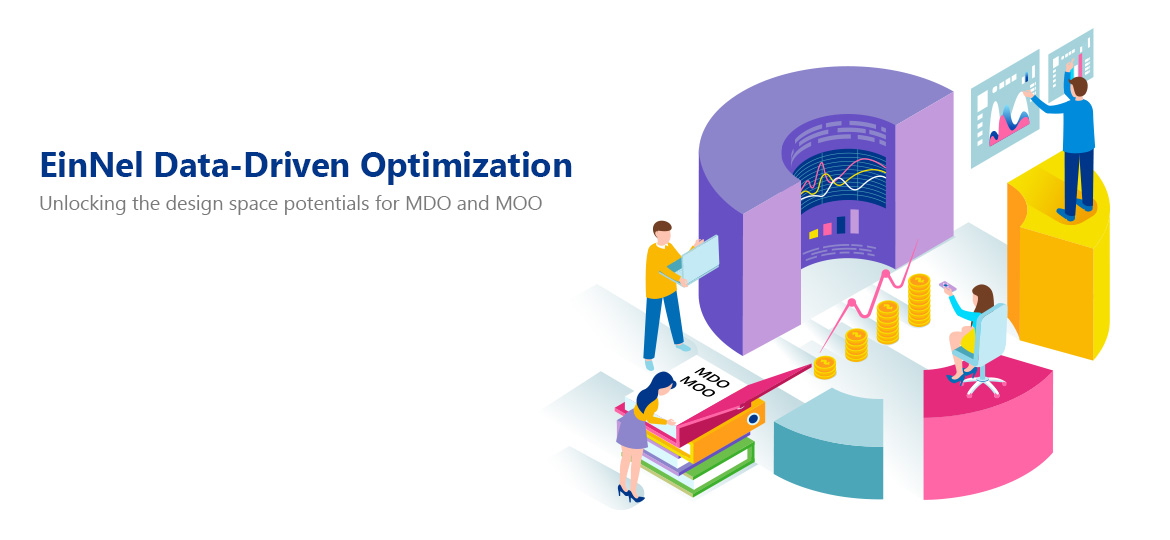Problem Statement
Automotive OEMs have been using Computer-Aided Engineering for more than half a century to validate and optimize the vehicle design and development process. Even though CAE helps reduce product development costs and time-to-market by eliminating the need for testing multiple prototypes, the most accurate results are achieved only in the later stage of the design cycle after performing several iterations and optimizations.
In today’s era of Industry 4.0, manufacturers are required to design and develop vehicles by integrating new technologies including Artificial Intelligence, Machine Learning, Data Analytics, Digital Twin, and Cloud Computing. Instead of being physics-based, such an integrated vehicle design process should be data-driven and requires managing large volumes of data, which is a major challenge with our current CAE approach.
Solution – EinNel’s Data-Driven CAE
Our EinNel’s Data-Driven CAE platforms transform automobile industries from Simulation-Driven Engineering to Objective-Driven Engineering. We incorporate machine learning and big data solutions into CAE to predict the system behavior with high accuracy at the beginning of the design cycle.
Our powerful predictive data analytic engines generate actionable insights by processing a great deal of simulation dump files from a variety of CAE software applications. To make futuristic design decisions, both design and manufacturing constraints are considered, avoiding the possibility of iterations in the later stage of the design cycle.
Using our cloud-based CAE platform, organizations no longer need to rely on high-end computing hardware. By utilizing the cloud’s full potential, complex designs can now be validated with less computing power, allowing engineers to work from anywhere at any time.
Benefits of Data-Driven CAE











